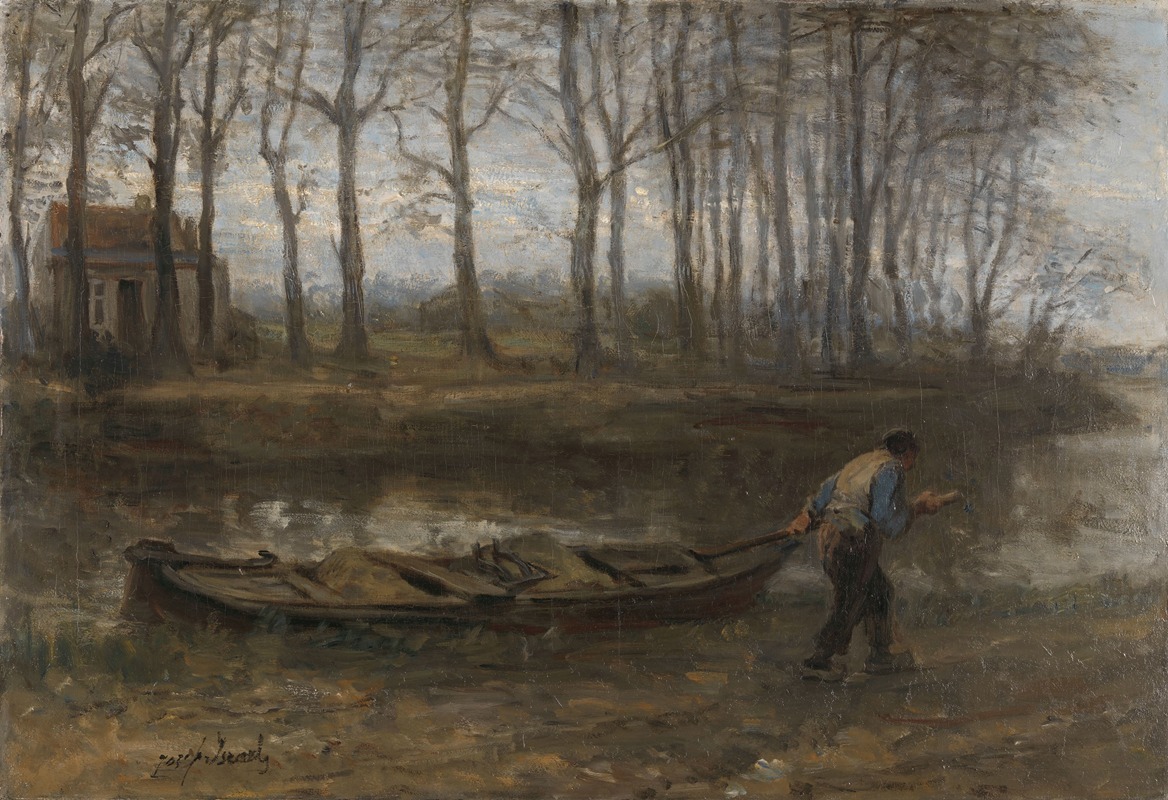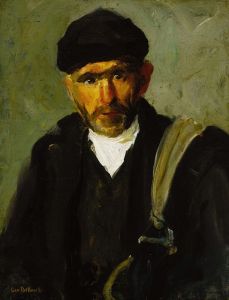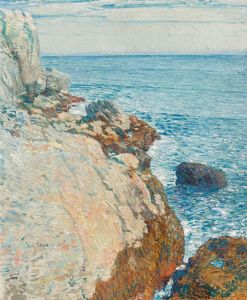
The Sand Bargeman
A hand-painted replica of Jozef Israëls’s masterpiece The Sand Bargeman, meticulously crafted by professional artists to capture the true essence of the original. Each piece is created with museum-quality canvas and rare mineral pigments, carefully painted by experienced artists with delicate brushstrokes and rich, layered colors to perfectly recreate the texture of the original artwork. Unlike machine-printed reproductions, this hand-painted version brings the painting to life, infused with the artist’s emotions and skill in every stroke. Whether for personal collection or home decoration, it instantly elevates the artistic atmosphere of any space.
Jozef Israëls was a prominent Dutch painter associated with the Hague School, a group of artists known for their realistic and often somber depictions of rural life in the Netherlands during the late 19th century. One of his notable works is "The Sand Bargeman," which exemplifies his focus on the everyday lives of the working class.
"The Sand Bargeman" portrays a solitary figure, a bargeman, who is engaged in the labor-intensive task of transporting sand. This painting is characteristic of Israëls' style, which often highlighted the dignity and resilience of common people. The subject matter reflects Israëls' interest in the struggles and perseverance of the working class, a theme that resonated with the social and economic changes occurring in Europe at the time.
Israëls was known for his ability to convey emotion and narrative through his use of color, light, and composition. In "The Sand Bargeman," he employs a muted color palette, which adds to the somber and reflective mood of the piece. The use of light is particularly noteworthy; Israëls often used natural light to create a sense of realism and to emphasize the textures and details of his subjects. The light in this painting may highlight the bargeman's worn clothing and the rough texture of the sand, underscoring the physical demands of his work.
The composition of "The Sand Bargeman" is carefully constructed to draw the viewer's attention to the central figure. Israëls often used compositional techniques to create a sense of intimacy and immediacy, inviting viewers to engage with the subject on a personal level. The positioning of the bargeman within the frame, along with the surrounding environment, suggests a narrative of isolation and perseverance, themes that were common in Israëls' work.
Jozef Israëls was influenced by the French Realists, particularly Jean-François Millet, who similarly depicted rural laborers with empathy and respect. Israëls' work, including "The Sand Bargeman," reflects this influence while also incorporating elements unique to the Dutch landscape and culture. His paintings often served as social commentary, highlighting the harsh realities faced by the lower classes while also celebrating their strength and resilience.
"The Sand Bargeman" is an example of Israëls' mature style, which combined technical skill with a deep sensitivity to his subjects. His work was well-received during his lifetime, earning him recognition as one of the leading figures of the Hague School. Today, Israëls is remembered as a master of genre painting, and his works continue to be appreciated for their emotional depth and historical significance.
While specific details about the creation and current location of "The Sand Bargeman" may not be widely documented, the painting remains an important part of Jozef Israëls' oeuvre, illustrating his commitment to portraying the lives of ordinary people with dignity and compassion.
















